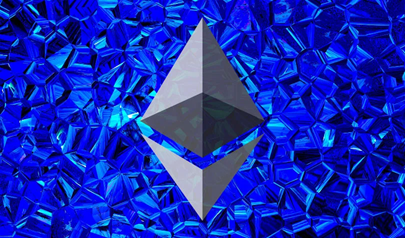Is Ethereum a Good Investment in 2025? A Complete Explainer

Ethereum (ETH) – the world’s second-largest cryptocurrency – continues to attract attention in 2025 thanks to its pivotal role in the Web3 economy and the continued growth of decentralized applications (dApps), DeFi, and NFTs. But is Ethereum still a good investment this year? Let’s analyze the whole picture from the perspectives of technology, market, valuation, and risk.
1. Major technological advances
Ethereum has officially switched to Proof-of-Stake (PoS) mechanism after The Merge update and continues to implement important upgrades in the Ethereum 2.0 roadmap. Notable:
Proto-Danksharding (EIP-4844) has helped reduce transaction fees for layer 2, promoting the development of scaling solutions such as Optimism, Arbitrum, Base.
The Ethereum ecosystem continues to attract developers, with tens of thousands of dApps operating daily.
Token standards such as ERC-4337 pave the way for the creation of smart wallets and improved user experience.
Strong technological developments help Ethereum maintain its position as the main infrastructure platform for the decentralized economy.
2. Steady growth in the Web3 ecosystem
Ethereum is home to key Web3 sectors:
DeFi: Ethereum still accounts for over 50% of the total value locked (TVL) in decentralized finance protocols such as Lido, Aave, Curve, Uniswap.
NFTs and SocialFi: While the NFT craze has cooled, Ethereum remains the place to issue and trade high-value collectibles like CryptoPunks and BAYC.
Tokenization of real assets (RWA) and decentralized AI applications (DeAI) are also starting to migrate to Ethereum and its layer 2s.
Ethereum’s widespread influence makes it a foundational asset for the future of the Internet.
3. Supply is decreasing, demand is increasing
After The Merge, Ethereum became a deflationary asset. The transaction fee burning mechanism (EIP-1559) makes the total supply of ETH increasingly scarce – especially during periods of high network activity.
In addition, the demand to stake ETH to receive rewards also keeps a large amount of ETH out of circulation. This could create long-term upward pressure on prices if investment demand continues to be strong.
4. Compared to competitors
Although Solana, Avalanche, Near or Sui are emerging with low fees and high speed, Ethereum still excels in the following aspects:
Higher security and decentralization.
Reliability and long history of operation.
Highest number of assets and developers in the market.
Instead of being replaced, Ethereum is transforming itself into a “base layer” for Web3, while other blockchains act as layer 2 or additional solutions.
5. Risks and challenges to consider
No investment is without risk. With Ethereum, investors should pay attention to:
Technological competition: New platforms with more optimal architectures can attract money and developers away from Ethereum.
Legal risks: The SEC (US) and global agencies have not yet definitively classified ETH as a commodity or a security.
Market sentiment: ETH price remains heavily influenced by Bitcoin volatility and speculative sentiment in the crypto market.
6. ETH Price Forecast 2025: Opportunity or Pitfall?
Valuation models show potential growth in 2025 if the crypto market continues its bull run:
Some analysts expect ETH to reach the $5,000 – $7,000 range, especially if Ethereum Spot ETFs are approved and institutional money flows in.
However, in a negative scenario, ETH could still fall to the $1,800 – $2,200 range if the market enters a deep correction.
Conclusion: Is Ethereum Worth Investing in 2025?
Ethereum continues to be an attractive long-term investment due to its central role in Web3, innovative technology, deflationary model, and strong ecosystem. However, the high price volatility and regulatory risks require investors to have a long-term vision and a good risk management strategy.
If you believe in the future of Web3 and decentralized finance, Ethereum is still one of the most worth considering options in 2025.
